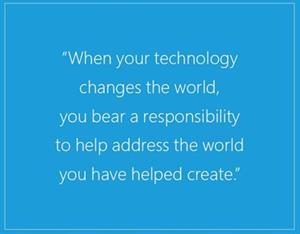Driving success through partnerships: Marketing and sustainable development
When the United Nations launched its 2030 Agenda for Sustainable Development in 2015, the vision and driving force behind the 17 Sustainable Development Goals (SDGs) was the belief that corporations have both the resources and capabilities that are needed to solve the world’s biggest problems, and that they could do so at a profit.
As Alex Tom, Head of Fundraising, Marketing & Community Engagement at UNHCR, the UN Refugee Agency in Canada, explains, “From the beginning, the idea with the SDGs was to accelerate impact by leveraging the power of companies, who can do things better than we can. The scope of the goals’ ambition reflected our confidence that corporations can be the key drivers of these transformational changes.”
But five years later, 1the needed changes simply weren’t being delivered, and one year into the COVID-19 pandemic, the world is in the grips of a global health, economic and social crisis that’s making the goals more challenging to attain while threatening even the progress we all have made to date. For example, my organization (World Vision) is seeing decades of humanitarian improvements erode under the strain of food insecurities, economic and health.
So why would companies and marketing leaders commit their companies to advancing progress towards the SDGs now? One reason is that more than 95% of the companies that have made a serious commitment to making progress towards one or more SDG goals are anticipating having a significant impact.2
Tom points to Microsoft as one leading company that’s making significant progress, especially through partnerships that are creating win-win scenarios that benefit communities by leveraging complementary strengths. Microsoft began by focusing on the four SDGs that aligned most closely with their mission to harness the power of digital technology as a powerful force for good that can transform the world and people’s lives. While putting the full strength of Microsoft’s global enterprise and unique assets behind their efforts has certainly helped, their marketing strategy has been instrumental in driving both the business value and impact of focusing on the SDGs.
Magdalena Pandiloska, Chief Marketing Officer at Microsoft Canada, counsels marketers to begin by choosing the SDGs that align most closely to their core business, then focus their marketing efforts internally to ensure the entire organization is aligned and committed to achieving the results they’re looking for.

Microsoft chose to invest in digital skilling initiatives because building a talent pipeline equipped with cloud, data and AI skills is key to strengthening Canada’s innovation economy. “We chose to focus on closing the digital skills gap, as it stood at the intersection of our purpose-driven mission and the power of technology to transform lives.”
Marketers play a critical role in telling the story of their company’s sustainability efforts in ways that amplify impact and create new opportunities to access customers and partners’ networks.
According to Lisa Gibson, Head of Communications, Microsoft’s storytelling focuses on communicating how their work is impacting lives, in ways that position partners and learners as the heroes. Using all 19 social media channels to announce partnerships and tell impact stories has helped increase awareness amongst target beneficiaries about how they can access partners’ programs and skills.
The biggest lesson marketers can learn from Microsoft’s example may be that organizations can achieve more through partnerships. A key realization was that they had ambitious goals they couldn’t accomplish alone, so they actively sought out partners who had a proven capability of delivering digital skills training. Their partnerships with organizations like NPower and higher education institutions enabled them to achieve far more than they could alone.
Every company has an opportunity to create shared value through strategic partnerships with other organizations who are working toward the same goals, and marketers have a key role to play in forging these partnerships. Aligning their companies’ CSR efforts with the SDGs creates an opportunity to increase their credibility and ROI on marketing objectives by giving them an objective, globally recognized seal of approval. The encouraging news is that we still have 15 years to meet the 2030 Agenda for Sustainable Development, and by acting now, we have a tremendous opportunity to unite the world behind a single agenda and profoundly transform our world for the better.
No matter what SDGs your company is working towards, there are other organizations out there who are working towards the same objectives, and like you, they are looking for partners who can help them scale their impact. Please look to connect and bring more goodness to the world - and to your bottom line.
Read Part 1 and Part 2 of the series.
1 UN Sustainable Development Goals Report 2020
2 The UN Global Compact, as cited in Business as Usual Will Not Save the Planet, HBR June 2019




































